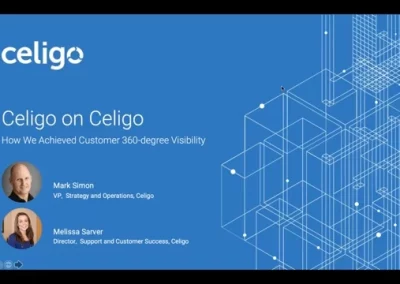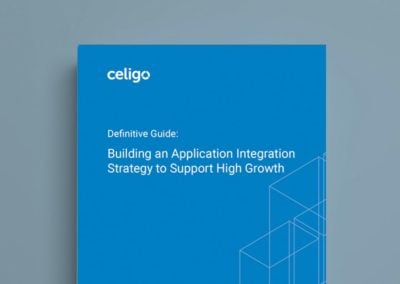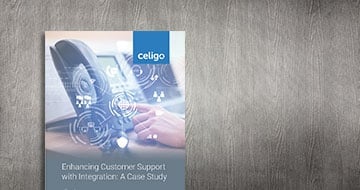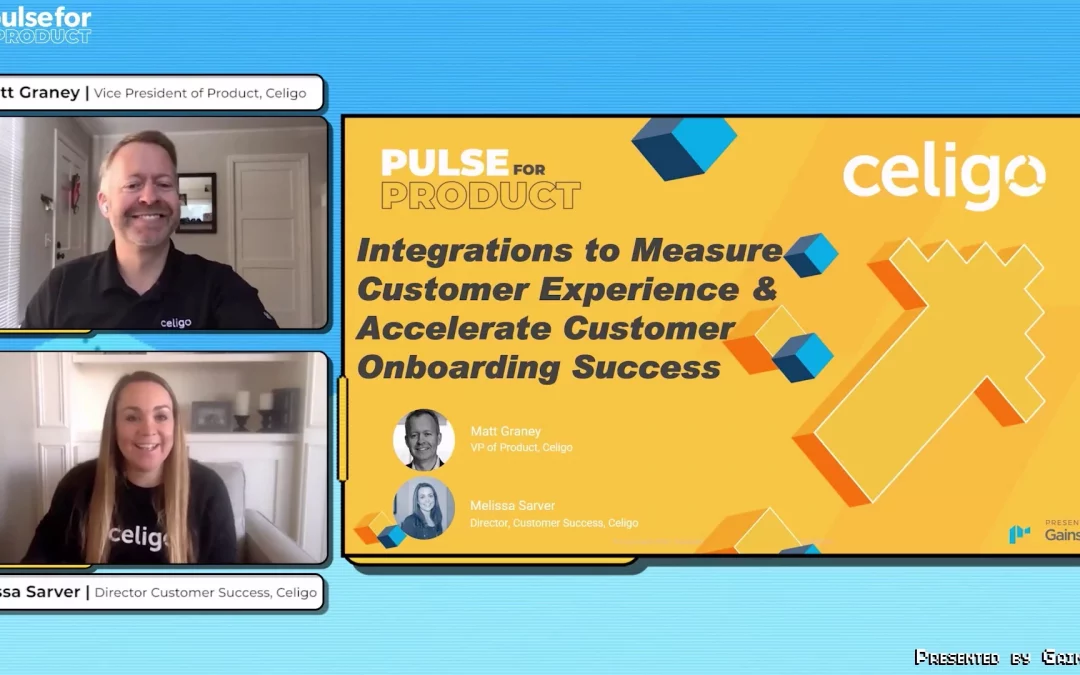On Demand Webinar
Integrations that Help Measure Customer Experience and Accelerate Customer Onboarding Success
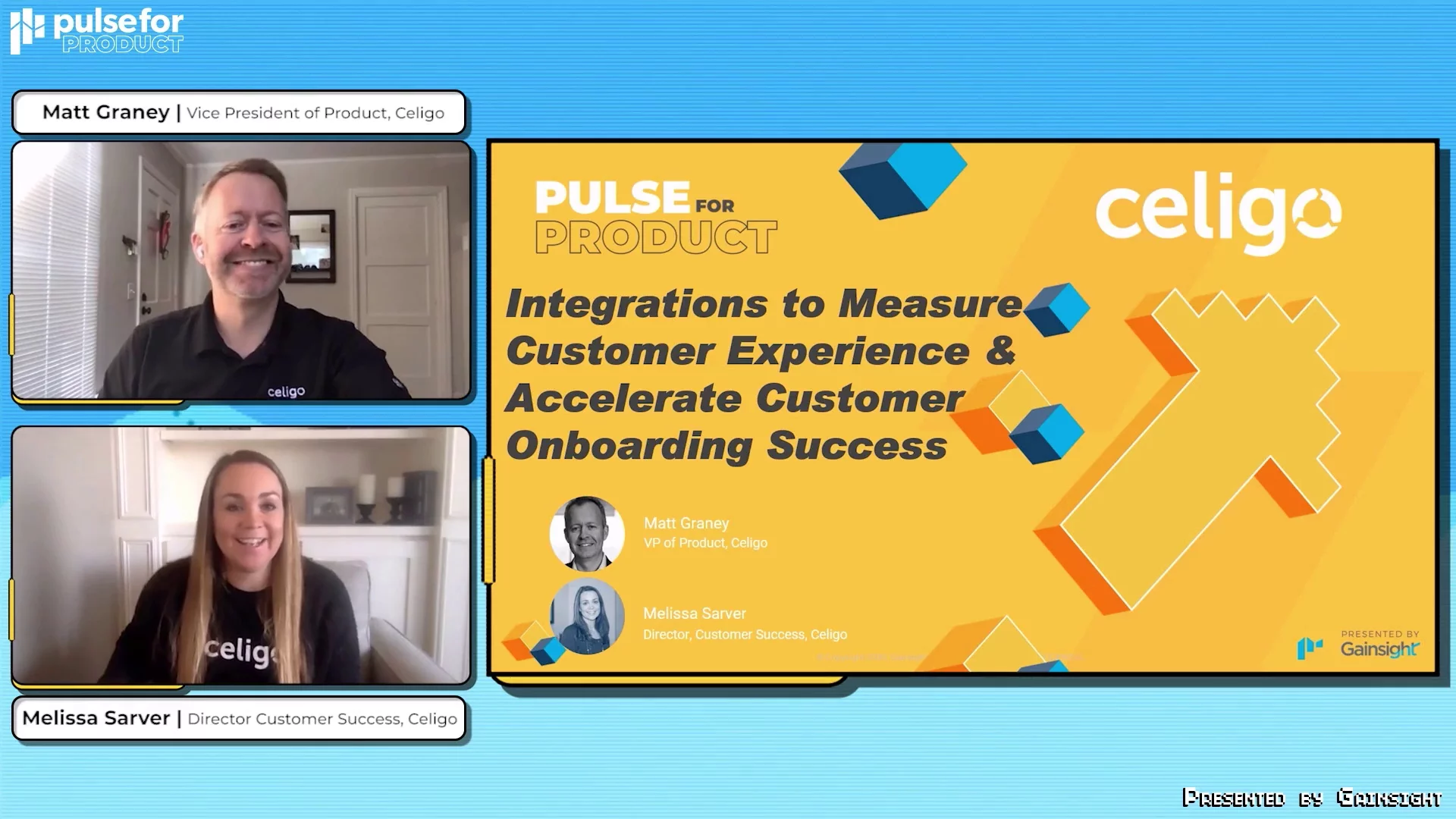
Register Now
Integration platforms (iPaaS) play a key role in addressing the many app integration challenges product teams face in modern SaaS companies. In this session, Matt Graney, VP of Product at Celigo, and Melissa Sarver, Director of Customer Success at Celigo, will share their expertise in how an integration platform and embedded integrations enable product teams to measure the customer journey and accelerate customer onboarding success.
Topics include:
- Customer experience metrics that matter
- 5 integrations to measure customer experience and move to proactive engagements
- Using embedded integrations to accelerate customer onboarding success – customer spotlights
- Practical tips for getting started with an integration roadmap
Watch Now!
Full Webinar Transcript
Hello, Pulse for Product, and welcome to day three in the Level Up Your Product Stack track. I am your track leader, Sloan Kendall, director of executive programs and partnerships here at Gainsight. I’m so excited to introduce our next presenters. They’re going to provide us some perspective on the integrations that are absolutely key to measuring and optimizing your customer experience and onboarding. So please help me in welcoming our friends from Celigo, Matt Graney, VP of product, and Melissa Sarver, director of adoption success. Some quick fun facts, Matt began his career as a software engineer based out of Australia. And Melissa, when she’s not driving adoption, you can catch her on the baseball field with her sons as well as bingeing the latest in documentaries and reality TV. And please, don’t forget to leave your questions for Matt and Melissa in the chat. And when the session wraps, do be sure to go check out our amazing sponsors as well as our networking groups to connect with peers. Thank you so much. And enjoy. And over to you, Matt and Melissa. Hi, everybody. My name is Matt Graney, VP of product with Celigo. And I’m joined by Melissa. Do you want to say, “Hi,” Melissa? Hi. I’m Melissa Sarver, director of customer success at Celigo. And we’re here to talk to you today, as Gainsight customers, about integrations that we use to measure customer experience and the way in which it drives customer success. And being on the product side and also on the customer success side, these are the two sides of the coin that we want to cover today. Both are really important. So as a product leader, what’s important for me? Well, from a focus point of view, it really is a lot about retention. There are plenty of studies out there, this one from, Price Intelligently, that shows that it’s much more effective and efficient to focus on existing customers than to continue to acquire new ones. So in order to drive that, it’s really all about retention leading to upsell. And that’s where a lot of growth comes from for SAS companies. And, here, we’re talking about a 4X difference. The key to upsell, then, is really going to be about product usage. The way we look at it at Celigo is to think about it in terms of both the user adoption metrics as well as the user journey. So we can break that down in that the user journey is about the way in which customers find value in your product, and then adoption is about exactly how the product spreads throughout an organization. And the key is really about seeing both of those move at the same time. And we’ll see on the next slide why that is. So again, taking a cue from Price Intelligently, we talk about initial acquisition of a customer, finding that initial value, and then getting into this flywheel where growth leads to additional value, further expansion, upsell opportunities, and more value as the product expands kind of virally throughout the entire organization. In order to really understand that and looking further at adoption and the user journey, we came up with this two by two matrix. So, obviously, if the user journey, either a negative one through the positive one, adoption, initially limited and growing to broad in the bottom left here, you’re really in the danger zone because the user experience has been poor. It’s overall negative and it’s still a limited adoption. At that point, the cost of switching is virtually negligible. And so you’re really on borrowed time. But if you have a positive user experience but adoption is still limited, then you can still consider the product to be at risk. Because in a sense, the organization, your customer’s not entirely bought into your solution yet. Conversely, from a growth point of view, you’re actually going to be quite stagnant if the adoption is broad but the users really don’t like it. The user journey is overall negative. You’re never going to be able to continue to grow that if there’s this kind of negativity around the product and it’s almost like your customers are holding their nose as they use your product and not really embracing it. The key, of course, with all these grids is always to be in the top right where you have a positive user experience and broad and further growing adoption. So we look at these sort of user journey metrics and adoption metrics as being key to finding growth in an organization. So that’s certainly the way we look at it at the high level. And then if we go down into the next level, we’ve broken this down to think about how user journey and adoption really matter. So you can think of it in a couple of different ways. From the user journey point of view, it’s all ultimately going to be around stickiness. So on the right, you see that we’ve broken this into dimensions of value engagement and advocacy. Now, these are metrics that we use for our product. So this is specific to us. In your organization, it’d be different. But the way our customers experience value with our platform, which is an integration platform, it’s about the volume of data they move, the number of flows that they have running to move data around. From an engagement point of view, we want to see that they’re logged in. That they’ve taken out training classes and got more and more of their team certified, and then advocacy which probably applies equally to any software business. It’s things like net promoter score. It’s references and other ways of looking at advocacy. So these are really key to stickiness if we’re not able to see movement in these. These are the sort of the early warning signs for us. Now, as an organization, we have a North Star metric that’s all about really seeing the number of data flows that our customers are building– are increasing. But these are the contributing metrics that help drive that. And by monitoring these, these are really the metrics that matter for us from a stickiness point of view. And seeing how these grow over time, it’s a way of helping us to understand both the sentiment throughout the user journey as well as tracking the adoption throughout. So with that, I’m going to hand it over to Melissa who’s going to talk about the journey that Celigo itself has gone on in order to do the same for our organization. All right. So you’re probably asking yourself at this point how do you get visibility into all these different areas in order to measure the health of the customer? And it seems a little bit daunting when you think about it. But really for us, we leverage the power of integration in order to bring the data in from several different resources to produce a true 360 view of the customer. We know that building the integrations and the subsequent automations is an iterative process. So we start out with just looking at it from a basic perspective and what are the attributes of the customer. We look at the customer and opportunity level information and integrate that as our first step. Next, we want to look into things around the product data. So what has the customer purchased and how much are they paying– those sorts of things. And we continue to build upon that and begin to measure things around the customer engagement. Looking at things like NPS scores and support ticket data and then further refining the product usage data. And then, next, we’re able to start using that data to really identify potential risk situations and begin to trigger more automated scalable workflows in order to proactively mitigate that risk. Again, this may seem like a huge long, difficult process but at Celigo, we truly believe by leveraging the power of integration, you can accomplish this in very little time. I’ll put a disclaimer out there: I’m not a developer. I’ve never taken a coding class in my life, and I was able to build all the integrations myself. So for me, personally, I feel like this is something that you should not be intimidated by– the concept is very powerful when it comes to integration but with the right tool, it can really make a huge difference in being able to execute that. So our first step in identifying– or building the integration is to identify the hub of where this data should live. So of course, for us, that was Gainsight. Gainsight was really designed– and one of the things that attracted us to it was the fact that you can really customize what data you wanted to see and how you were able to see it. So we decided that we wanted to leverage Gainsight’s tool set in order to help us automate our customer journey and the activities that our CSMs perform. So once we established that, we were set off to build the integration. And as I mentioned earlier, our first step was around integrating our [customer?] contacts. For most customers of Gainsight, the assumption is that the source of truth for this information would come from Salesforce but that’s not the case for us. So as an iPaaS company, we decided to leverage integrator.io, our iPaaS platform, to build our integrations. Our first step was to bring in data from our ERP which allowed us to give visibility just to our customers– or of our customers to our CSMs through the 360 view. As a second step, we looked at integrating our subscription data. So this is also housed in our ERP in custom objects. And, again, with the flexibility of Gainsight, we were able to build out custom objects to house this data in a way that was very meaningful for the CSMs. So again, we integrated the information and as a result, we were able to see things around the customers’ [ACB?], the types of products, their renewal dates, and really build more processes around that. The next step in this integration journey, was really diving deeper into the customer engagement data. So prior to implementing Gainsight CS, we had actually already been leveraging Gainsight PX for our in-app NPS surveys. I believe we were one of the first customers that were using both CS and PX and so when it came to integrating the two systems, we leveraged, again, our iPaaS platform in order to integrate the two. Once we had the NPS surveys in Gainsight we were able to improve the response time of our feedback loop, and we were also able to start building out our scorecard. And then as the next step in building out the scorecard, we brought in our support ticket data. So this, for us, was really important to have in real-time. We needed to build this data out in-game site not only for our scorecard but also for proactive escalations for the CSM. So this point in our integration really was a meaningful step for us in order to better serve our customers. And finally, the last step for us to capture the customer engagement data was really probably the biggest win, it continues to be, and that’s the product usage data. It was available to CSMs in different systems and required them to analyze the data which really wasn’t scalable or effective most of the time. So we really wanted to simplify this and make the data more meaningful for them. So through the integration, we were able to transform the data in a way that we could create easy to read charts. We created calls to action. We incorporated it into our health score. And this gave visibility to the CSMs and our executive team on the health of our customers. Without this integration, we would have been scrambling when the world shut down. But instead, we were able to leverage this data and see our customers who were potentially being impacted by COVID, and we developed a phased outreach campaign to engage with the customers very quickly, and we were able to work with them for any financial difficulties user or other things that they were going through. There is absolutely no doubt that this saved us from a huge amount of potential churn, and everyone was thankful that we had this integration in place so we could approach this in a very stressful time with an intelligent strategy. Finally, our roadmap for our game site implementation also included improving our onboarding process. So early on we had developed a workflow and game site for execution of our onboarding process. We were able to take that one step further when our services team implemented Financial Force. So again through the power of integration, we were able to give CSMs better visibility into where the customer was in the onboarding process. We implemented tech touch engagements where it made sense and allowed the CSMs to update data actually in game site that flowed back to Financial Force for our services team to use. So all around, again, impacting both what the CSMs do and our customer experience. Now with all of these integrations, we really transformed how we look at customers and it happened in a pretty short period of time. At the CSM level, we could see everything from basic customer data to detailed usage information. We were able to– from the executive level, we could see how we measure customers. We could report on customer health. We started to be able to really forecast churn. We were able to automate and scale to increase our capacity without increasing headcount, all things that matter nowadays. And so everyone in the company really found benefit from the power of this integration. And I know I’ve mentioned several times about how quickly we were able to put this in place. So Matt, do you want to kind of go through some of the tips around how to accelerate that time to value? Yeah, I will. Thank you, Melissa, and I’ll add, from my point of view on the product side, the ability to have LCSNs equipped with information from the product on Splunk, so all the backend stuff as well as in-app usage information whether that’s NPS data but also product usage information from Gainsight PX and know that when the CSMs are interacting with customers, they have that information at their fingertips is really key. It’s also allowed us, of course, to iterate on our customer health scores, so we can look back to see for all the bits of data that we’re collecting, which are the ones that best predict churn or risk and respond accordingly. So to bring it home, as Melissa says, how do we actually put all this together? So I would just leave you with some tips in terms of accelerating yourself along this journey. So the first is to think about repeatability. What are the common sorts of things that you’re looking to do? In the case of getting data all into a hub, you should try to look for pre-built integrations where you can. There are many times, as Melissa said, for Gainsight CS, many of the integrations are written with the assumption that Salesforce is the hub or one of the sources of truth. So if there are existing integrations, you should absolutely be ready to use those. But it’s also key to ensure that non-technical resources are able to get the job done themselves. So as Melissa said, she’s not a programmer, not a software engineer, and yet was able to build this because as a business user with the right tools, in our case, the use of our own platform, we integrate our IO which is an integration platform, she was able to focus and get it all done. But you notice also it was a phase. There were six different steps and the focus at each step was on impact, it was on the cost, and also thinking about the complexity. Look for the quick wins and prioritize according to these factors. I think it’s also important to avoid the lure of do-it-yourself. Many of us, of course, we’re software companies, we’re surrounded by engineers who will say, “Don’t worry, we could build that ourselves.” And yeah, no doubt they could. But is that really where you want your engineering team spending their time working on all this internal wiring just to get information into the hands of your customer success team to be able to track adoption and user journey? Arguably that’s not the right use of their time. And even if it was, there are some cautions. It can be quite complicated dealing with error handling, reporting of errors. It’s ultimately not your core competency and it can be harder than it looks. Obviously, there’s a high opportunity cost on those resources as well. And then as we’ve shown, the business needs evolve. All right. The picture of our integrations began very, very simply, and over time, we’ve added new tools. Financial Force wasn’t even in the picture 12 months ago. We started with Gainsight PX even before we had Gainsight CS. So unless you’re prepared and signing up for that entire journey and the evolution, then really, beware of trying to do it all yourself. And then the final parting words here is really that product usage data is key. We’re looking at both the journey of individual users and their sentiment, as well as the broader adoption and tracking adoption against entitlement. If your customer has purchased a certain amount of capacity, if they’re not using it all and you don’t understand why, that’s where the risk comes from. It’s important for internal customers, of course, to get what they need, but for your external customers, they need to be self-reliant. You need to make sure they have everything they need to be self-reliant and to ultimately be deeper in their engagement with your solution. And then the key, as always, is data. Getting data from the systems of record into the right hub so that, in our case, there’s a single pane of glass for customer success, so they can be fully in charge of the full lifecycle of the customer and ensuring that the adoption continues to expand in your organizations. So with that, we will thank you and we look forward to hearing your questions in our Q & A session. [music] [silence] Hi everybody and welcome to the live Q & A portion of the presentation. My name is Sloan Kendall and I’m just so excited to be joined by Matt and Melissa from Celigo. We are going to spend some time digging into some of the questions that came in from the chat and just please feel free to ping the chat here on the lower right-hand corner of your screen there and feel free to ask as many questions as you like. So Matt and Melissa, thank you so much for joining us. Just to kick things off in the spirit of Gainsight’s, we’ll start with some child-like joy. So obviously, traveling hasn’t been too much accessible to us at this point but when things are all said and done and we can travel freely, would love to know where the first place you guys will go. So maybe a place that’s been on your bucket list for some time now. Melissa, we’ll start with you. All right. So mine’s not necessarily on my bucket list, per se, because I’ve been there a lot but I would actually pick to go visit my sister. She lives in California and I’m in Indiana so I would like to go see her. Awesome, Very cool. Matt, how about you? Yeah, I’d probably opt for a family reunion as well. I’m originally from Australia and my family is back there and even though I was just back there at Christmas, these six months has been the longest two years ever, right? [laughter] So I feel like I’m due, so. Awesome. That’s great. Well, both sound like great spots. So again thank you guys for joining us and thank you also for sponsoring the event. It’s thanks to companies like Celigo that we’re able to make this event happen, so we appreciate that. Just to kick things off, it was very clear in the presentation that there’s a really, really good synergy between Celigo’s products and customer success teams, which we, again, said are definitely very firm believers that that marriage is so critically important to make and optimize for the customer experience. I would love to hear from both of you, just how you go about making that marriage work well. And maybe, some words of wisdom to other companies who are kind of figuring out those motions of how you develop the right cadence and, ultimately, how you just approach that collaboration. So I don’t know. Melissa, maybe you want to start us off there? Sure. So we have a lot of different things that we do, I think, that help bring us all together as one. So one of the things is, we have, for example, a weekly risk meeting. And the product team is involved in that. CS is involved in it. All of the different departments are involved in it. And so we get to hear feedback from the product team. We get to hear it from the voice of the customer through the CSM. And we have a lot of different things that we do. We have monthly meetings where we kind of sync up and level-set between the product team and other departments in the company, as well. And so we just have a lot of different channels, I think, where we set expectations. We’re very– communicate over the top to make sure that everybody’s on the same page, and that we’re able to provide customer feedback to the product team to help drive the evolution of our product, as well. That’s awesome. Super helpful. Matt, anything you could add? I would just echo everything that Melissa said, and add that, I think, there’s a common understanding that we’re not done, right? That this is an evolution. Maybe from humble beginnings at times, but just as we went through in the presentation, even the application architecture has evolved over time. The main apps we have supporting our processes. And as they’ve evolved our processes have evolved, and we have a roadmap for things that are coming up next, as well. So I think it’s just– I think, reflective of an ongoing commitment. That’s great. Super, super helpful. And to that point, Matt, the process that you took to select the integrations that’ll give you that full customer view. It would be interesting, and I think the audience, maybe, find it helpful to understand, how did you go about that process? Obviously, there’s no shortage of systems that tell some bit of data about the customer. So any insights into like an elaborated approach to, “Here’s how we map out the exact sequencing of what integrations we would consider critical versus, maybe, less critical but still necessary.”? Talk through that process because you guys are, obviously, resident experts in the concept of integrations and leveraging data from different sources. So any kind of best practices on how that road-mapping happens, and how others may be able to glean some insights from that. Yeah. I think as we said in the presentation, that one of the keys is determining the hub, right? You have to really begin there. And the interesting thing is our data hub has sort of evolved over time. So we said a system of record for us at Celigo, was NetSuite. And there are, actually, I would say, two main reasons for that. One for Celigo is, we grew up in the NetSuite ecosystem, in terms of having a lot of expertise there. So just in-house knowledge. But the other thing is, in a sense, we use NetSuite, we had in the past, especially used it, like a generic database. Create custom records do your own thing. And we would never be close to governance limits. Usage and such. So it sort of gave us a lot of space to play. And so then as we began to collect, say, more product telemetry, we needed somewhere to put it, so more and more folks could access it. And at that stage, NetSuite was the single pane of glass for CSNs. And it had limited information but it was a matter of getting information there and then over time, for example, when we introduced Gainsight CS, that shifted. It also caused us to rethink, well, does it make sense for all this stuff to go into NetSuite? So we instead introduced, effectively, a data lake. And it’s a large, post-gross instance and nothing too sophisticated but that’s really what’s served us. In terms of the integrations themselves, I think we went through in each of these steps. And it’s just evolved over time where I would view it as strictly, actually, an agile process. That’s, in fact, the way to think about it. That we’re putting down layers of integration, improving the fidelity at each point. And so, for example, there are certain things where CSMs might glean from live conversations with customers about what’s the mood of the customer. And all of the time, of course, I mean, we trust that CSMs. But over time we want more and more data to back that up. And so the human side of it, if you will, is taken out of it. CSMs become more scalable because they’re not relying on intuition and a bunch of phone calls. They’re able to use this telemetry. So I think that the prioritization really was built on top of this idea of layers and responding to our changing data needs, and even how the systems of record evolved as well. Great. And then, Melissa, anything from the CS perspective that you would add to that? I mean, only in this specific situation that you could use, obviously, as an example to any kind of roadmap for integration is that for us, we had to think about the problem that we were solving when it came to the integration. And so we wanted to– the first priority was that we needed to have a better window into our customers. And so that’s why that was the very first thing that we did. And then we started to– with what Matt was saying, we started to define what was it that– what were the problems that we were having? What were the problems that our customers were having? And what data can we use to help drive either mitigation of that or prevention of those problems to begin with? So that’s really kind of how you prioritize and really think about the data that you want to bring in. It’s really just as simple as thinking about, “I have this issue. How am I going to solve it?” Right? And integration is a great way to help kind of drive some of that. That’s great. Super helpful, and some really good nuggets in there for folks to take away. We do have a bunch of questions in the chat here so I’ll dig in here. Question from Boris. “Are you surveying NPS on a company level or brand or are you interested in an NPS of a specific product or app? If it’s the latter are you running NPSs in parallel or pausing on and starting another?” Matt or Melissa, you want to take that? Melissa, maybe you could take it since, I mean, I help deliver it using [laughter] Gainsight PX but Melissa, really, is the customer for [inaudible]. Right. So we kind of look at NPS a little bit differently depending on the– I guess, the action that we want to take, okay? So when we look at NPS we do it by user. It’s not necessarily by product because, at the end of the day, for us, our integrator.io platform is what drives all of the other products that we sell. So we look at it holistically from a customer’s perspective. We do then drill down from a user perspective when we introduce our feedback loop for NPS. So from a company level, we’re looking at it as an average of all of the NPS scores that are submitted by all of the users at the company. And we build that into our scorecard through our integration. But then we have a feedback loop that’s specific to the NPS process as well, where we’re following through with individual users. And for us that’s really important because we found that you can have five people from the company all logging in to the product and they’re not necessarily on the same page. So it’s important to think up and to understand why one person would be having a challenge versus another and really get that perspective from them. That’s great. Great. Another question we have from Denise. “What is product usage data from Splunk into NetSuite. Is there overlap for the data you capture via Gainsight PX?” There is some potential overlap but for those of you who know, Splunk is basically a repository for application logs. And so Splunk can tell us a lot of what might be happening on the back end. With Gainsight PX, yes, you can track clicks and so on. But it’s difficult sometimes to fully understand the state of the product just based on the UI interactions. The other thing is our product itself will– as you might have guessed already at Celigo, we’re an integration platform. And therefore, a lot of what happens, happens when no one’s logged in, right? It’s not like a consumer app or anything like that. Uses designed integrations and they’re designed to run them headlessly, autonomously on schedule, batch mode or real-time. And so we need that combination of what were the users doing as well as what’s actually happening. So for example, the health of an account, it might all look good from UI point of view. But we could see on the backend that the integrations they’re running are actually failing. So say the integration between the CRM and the ERP is only 10% of the times it’s successful, then we have a problem, right? So Splunk can help give us that sort of information and that’s just obviously not what someone like Gainsight PX is used for. So we definitely use them in conjunction. But for us, given that we’re a middle web platform, we need the backend logs as well. Great. Yeah. I would add too that the right kind of priority that each one of them takes differs throughout the customer journey. So on the front end of the customer journey during onboarding, the Gainsight PX stuff becomes much more valuable to us. We want to know if people are logging in if they’re setting up flows, that kind of just user clicks that we want to capture. Like what Max said, once you have everything set up, that kind of flip flops where the Splunk data becomes more important for us, where we want to know how is their integration actually running now that it’s set up. We still want them to log in and be engaged with the product. So we don’t totally dismiss that but there is kind of a shift in priorities as the customer journey progresses too. Great. Very, very helpful. And a question from Patty. “Can you talk more about your onboarding process? And did the data help you customize or personalize onboarding for customers?” 100%. [laughter] Yes. So we had kind of a very, I guess, generic onboarding process before we implemented Gainsight. We had PowerPoint templates and that sort of thing that we would use for our customers. But once we implemented Gainsight and then started to set up these integrations, it opens up a whole new world. So some of the things that we can do, it actually allowed us to scale better so we can automate certain things, right? So, for example, we would still have a personal touch between the customer and the CSM where we’re introducing them to Celigo. We are letting them know about all the resources, talking about desired business outcomes. And so that still is a one-on-one conversation. But then throughout the onboarding process, you end up being able to automate some of that through the integration, right? So I can see, for example, now, has the customer engaged with our services team? Have they actually logged into our university and started a course? And all of that data is being integrated into Gainsight so that I can then drive automation and, in paying the user, I can through the journey orchestrator in Gainsight send out emails and just say, “Hey, I see that you’ve logged in but you haven’t actually completed the course,” or something along those lines. And so it allowed us to kind of scale, and it also allowed us to have different interactions with the customer. So we had a combination of tech-touch versus personal touch. And then the last thing I think that was really important for us is that we also had better visibility into potential issues throughout onboarding, right? So you’re big on customer success that you know that the onboarding phase is really kind of the most important for the customer. And for us, we want to have those red flags very clear and obvious to us through the onboarding phase so that the customer ultimately achieves their desired business outcome, and we have a good relationship moving forward. So that was really important for us. That was absolutely the first thing that we focused on when we implemented Gainsight. That’s great. Matt, anything you’d add there? No. I think I mean, we’ve obviously been involved in providing some of that data about like what users are doing and making sure we can get it to Gainsight although it’s fair to say, too, Melissa’s built a lot of these integrations itself which is I think– yeah, which is great. Obviously, it’s about the use of our own products just to solve our own problem, so. That’s great. Well, I don’t know if anybody asked the question, but just the other thing I would probably add is that– I think I said it in the presentation, but I have no background in anything related to programming. I have an education degree [laughter] and I was able to do it because to me, actually setting up an integration is fairly simple. It seems very intimidating but once you have that foundation and you set up your first flow, you use that framework for the rest of your integration. So it’s kind of just I have my first one. That probably took me the longest. And then everyone after that was just– I mean, I busted them out super quick because I already had that framework built, so. That’s great. And [it’d?] be curious on this topic, obviously, the ease of creation of the integrations is a huge value-add, and knowing, obviously, Gainsight, we have native integrations. When thinking about iPaaS and some value-add that that brings to the table, obviously, the ease of use is one. Anything else that you guys want to point out as some of the value that the iPaaS integration process really brings to the table? Yeah. If I could, I’d start with iPaas the integration platform as a service. It’s really about giving of control. So obviously there are plenty of vendor built integrations out there integrating, say, popular systems. So for example, Gainsights are on the integration site as something like Salesforce. But the moment you step outside the boundaries of the out of the box integration, you’re on your own. And if you can take advantage of what comes out of the box, that’s great, but integration platform allows you to do a few things. One, give you control, and two, everything in one place. Like one dashboard, for example. But also then allows you to evolve the business process over time as you saw in how the six steps that we went through. There were essentially the same things happening. Get data from places to the place that CSM is needed, but over time that completely evolved. There were more data sources. The system of record in the single pane of glass the CSM is moved. And so an iPaas allows us to sort of focus on– actually, not like how to force fit pre-built integrations into the mix but instead to sit back and really solve the actual problem and do it the right way. And then of course– I mean our goal, of course, is to make integration really as simple as the acquisition of the products in the first place. And I know we started with Gainsight PX back when it was still Aptrinsic. So before its acquisition by Gainsight. And we were probably one of the earlier adopters of the API because we didn’t fall into the coverage of the pre-built integration. So we were kind of on our own from day one, and it forced us– it actually helped us in a way. It forced us to do some of the basics, and then it opened our eyes to, “Here’s a bunch of other things we could do.” And so we worked closely with Mickey the CTO for PX from day one, and have obviously really gained a lot from that collaboration. That’s great. Was there anything else that you had? Probably just that for us, I think– for us it’s really important that we’re looking at best of breed applications across the board. So to Matt’s point that he was making earlier, we’re not trying to fit within the confines of a specific application. We’re really trying to look for the best solution that’s going to solve the need that we have. And so through the integration it allows us to really be able to do that at each different part of our business without creating that separation of data between the two. Great. And I know we touched on earlier, at the top, the importance of the collaboration between your two teams and just the consistent cadence of checking in, kind of tweaking, improving things along the way. The question from Denise is, “How does your product and customer success teams work together to find the key usage metrics to focus on?” Yeah. I think that’s something we learn over time as well, right? It evolves. I mean, of course, the product itself evolves, so what’s important evolves. But we have a pretty good idea of the North Star, if you will, and then the sorts of things that contribute to that. And also a key here is to look at successful customers, and also customers that have struggled, and by comparing their journeys and then the underlying data that these various metrics that we’re tracking, hopefully, they get a correlation to say, “Hey, customers that end up succeeding look like this, customers that end up being at risk of churning out look like this.” So it’s a matter of– in a sense, you almost have to over collect at the beginning. You can’t always be sure, but you need some historical data so that later as customers thrive or struggle you can go back and look for some sort of correlation. So it takes a bit of time, of course, and also to build up that history. So you can’t expect immediate results. You can start collecting stuff, but you’re not going to know the degree to which it predicts success or failure until you’ve got a bit of history under your belt. That’s great. And– You also, don’t be afraid to take a– no, and I was just going to say– and don’t be afraid to take a leap, right? I mean, you have to start somewhere. So [laughter] you just start and make your best kind of guess and then you keep evolving from there as you learn more and more. Yep. Trial and error is definitely a theme. Yes. [laughter] Well, with the last minute-and-a-half we have are still here. Well, and then this question– so what methods do you use to empower customers to be self-reliant? So a lot of that is around the automation. So we have a lot of different tools available to our customers. So we do have a Celigo University, where customers can log in and take courses and there are ones that are very specific to the products that they’ve purchased. We have knowledge bases. We, obviously, have different service offerings for customers as well when they implement. But we try to create– and again this is an evolution, right? We never stop producing this stuff to really help our customers get to where they need to be without having to rely on us. So it’s kind of an all company initiative where we’re building stuff into the product. We’re building out the university. We’re building the knowledge base where we’re pinging them via email with resources that would be valuable to them. And then we’re also trying to give them the one-on-one attention for the ones who really need it as well. So it’s definitely a group effort here. Sure. Sure. It takes a village. And Melissa, we appreciate your time so much. Thank you guys, for the presentation and for answering so many questions. Folks will be available for more questions. But until then, thanks so much for joining. Thank you. Thanks.
About The Speaker

Matt Graney
VP of Product
Celigo

Melissa Sarver
Director of Customer Success
Celigo
Meet Celigo
Celigo automates your quote-to-cash process with an easy & reusable integration platform-as-a-service (iPaaS), trusted by thousands of eCommerce and SaaS companies worldwide.
Use it now and later to expedite integration work without adding more data silos, specialized technical skillsets or one-off projects.
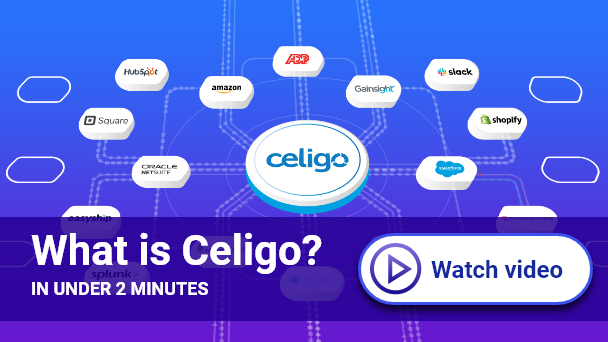
Related Resources
